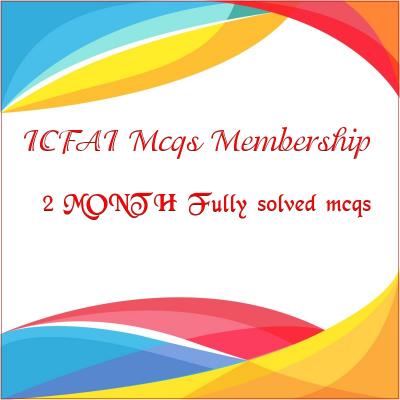MARKETING MANAGEMENT
Price:
Rs500
Case 2
Good old fashioned rock ‘n’ roll could be dead. If a mobile phone ringtone in the shape of the vocalizations of the animated Crazy Frog dominates the billboard charts for month on end, then it could well signal the death knell for the industry, and how it operates. If this ubiquitous amphibian’s aurally annoying song, converted from a mobile phone ringtone, outsold even mainstay acts such as Oasis and Coldplay, why should music companies invest millions in cultivating fresh musical talent, hoping for them to be the next big thing, when their efforts can be beaten by basic synthesizer music? The industry is facing a number of challenges that it has to address, such as strong competition, piracy, changing delivery formats, increasing cost pressures, demanding primadonnas and changing customer needs. Gone are the days when music moguls were reliant on sales from albums alone, now the industry trawls for revenue from a variety of sources, such as ringtones merchandising concerts, and music DVDs, levering extensive back catalogues and music rights from advertising, movies and TV programming.
The music industry is in a state of flux at the moment. The cornerstone of the industry- the singles chart- has been facing terminal decline since the mid-1990s. Some retailers are now not even stocking singles due to this marked freefall. Some industry commentators blame the Internet as the sole cause, while others point to value difference between the price of an album and the price of a single as too much. Likewise, some commentators criticize the heavy pre-release promotion of new songs, the targeting of ever younger markets by pop acts, and the explosion of digital television music channels as root causes of the single’s demise. The day when the typical record buyer browses through rows of shelves For a much sought-after band or song on a Saturday afternoon may be a thing of the past.
Long term success stories for the music industry are increasingly difficult to develop. The old tradition of A&R (which stands for ‘Artists & Repertoire) was to sign, nurture and develop musical talent over a period of years. The industry relied on continually feeding the system with fresh talent that could prove to be the next big thing and capture the public imagination. Now corporate short-term thinking has enveloped business strategies. If an act fails to be an immediate hit, the record label drops them. The industry is now characterized by an endless succession of one-hit wonders and videogenic artists churning out classic cover songs, before vanishing off the celebrity radar. Four large music labels now dominate the industry (see Table C2.1), and have emerged through years of consolidation. The ‘big four’ major labels have the marketing clout and resources to invest heavily in their acts, providing them with expensive videos, publicity tours and PR coverage. This clout allows their acts to get vital radio airplay and video rotation on dedicated TV music channels. Major record labels have even been accused of offering cash inducements or gift to radio station and DJs in an effort to get their song on playlists. This activity is known in the industry as ‘radio payola’.
Consumers have flocked to the Internet, to down load to stream, to ‘rip and burn’ copyrighted music material. The digital music revolution has changed the way people listen, use and obtain their favorite music. The very business model that has worked for decades, buying a single or album from a high-street store, may not survive. Music executives are left questioning whether the Internet will kill the music business altogether. The traditional music industry business model has been fundamentally altered. According to the British Phonographic Industry (BPI), it estimated that 8 million people in the UK are downloading music from the Internet-92 per cent of them doing so illegally. In 2005 alone, sales of CD singles fell by a colossal 23 per cent. To put the change into context, the sales of digital singles increased by 746.6 per cent in 2005. Consumers are The “big four’ labels Universal music The largest music label, with 26 per cent of global music market share; artists on its roster include U2, Limp Bizkit, Mariah Carey and No Doubt Warner music
Third biggest music group; artists on its roster include Madonna, Red Hot Chili peppers and REM Song BMG Merger consolidates its position; artists on its roster include Michael Jackson, Lauryn Hill, West life, Dido, Osast and cristina Aguilera EMI Artists on its roster include the Rolling Stones, Coldplay, North Jones Radiohead and Robbie Williams
Buying their music their through different channels and also listening to their favourite songs through digital media rather than through standard CD, cassette or vinyl. The emergence of MP3 players, particularly the immensely popular Apple iPod, has transformed the music landscape even further. Consumers are now downloading songs electronically from the Internet, and storing them on these digital devices or burning them onto rewritable CDs. Glossary of online music jargon Streaming: Allows the user to listen to or watch a file it is being simultaneously downloaded. Radio channels utilize this technology to transmit their programming on the Internet.
‘Rip n burn’: Means downloading a song or audio file from the Internet and then burning the song on to a rewritable CD or DVD.
MP3 format: Mp3 is a popular digital music file format. The sound quality is similar to that of a CD. The format reduces the size of a song to one-tenth of its original size allowing for it to be transmitted quickly over computer networks.
Apple iPod: The ‘digital jukebox’ that has transformed the fortunes of the pioneer PC maker. By the end of 2004 Apple is expected to have sold close on 5 million units of this ultra-hip gadget. It was the ‘must-have item’ for 2003. The standard 20GGB iPod player can hold around 5000 songs. Other hardware companies, such as Dell & Creative Labs, have launched competing devices these competing hardware brands can retail for less than 75 Peer –to peer networks (P2P): These networks allow users to share their music libraries with other net users. There is no central server, rather individual computers on the Internet communicating with one another. A P2P program allows users to search for material, such as music files, on other computers. The program lets users find their desire music files through the use of a central computer server. The system works like this: a user sends in a request for a song; the system checks where on the internet that song is located; that song is download directly onto the computer of the user who made the request. The P2P server never actually holds the physical music files-it just facilitates the process.
The Internet offers a number of benefits to music shoppers, such as instant delivery, access to huge music catalogues and provision of other rich multimedia material like concerts or videos, access to samples of tracks, cheaper pricing (buying song for 99p rather than an expensive single) and, above all, convenience.
On the positive side, labels now have access to a wider global audience, possibilities of new revenue stream and leveraging their vast back catalogues. It has diminished the bargaining power of large retailers; it is a cheaper distribution medium than traditional forms and labels can now create value-laden multimedia material for consumers. However, the biggest problem is that of piracy and copyright theft. Million of songs are being down loaded from the Internet illegally with no payment to the copyright holder. The internet allows surfers to download songs using a format called ‘MP3’, which doesn’t have inbuilt copyright protection, thus allowing the user to copy and share with other surfers with ease.
Peer to peer (P2P) networks such as Kazaa and Grokster have emerged and pose an even deadlier threat to the music industry-they are enemies that are even harder to track and contain. Consumers can easily source and download illegal copyright material with considerable ease using P2P networks (see accompanying box)
P2P Networks used for file sharing
Kazaa
Gnutella
Grokster
Morpheus
EDonkey
Imesh
Bearshare
Win MX
A large number of legal download sites have now been launched, where surfers, can either stream their favourite music or download it for future use in their digital music libraries. This has due to been to the rapid success of small digital media players such has the Apple iPod. The legal downloading of songs has grown exponentially.
A la carte download services and subscription-based services are the two main business models independent research reveals that the Apple’s iTunes service has over 70 per cent of the market. Highlighting this growing phenomenon of the Internet as an official channel of distribution, new music charts are now being created, such as the ‘Official Download Chart’. Industry sources suggest that our of a typical 99 download, the music label gets 65p while credit card companies get 4p, leaving the online music store with 30p per song download. This service may fundamentally eradicate the concept of an album, with customers selecting only a handful of their favourite songs rather than entire standard 12 tracks. These prices are having knock-on consequence for the pricing of physical formats. Consumers are now looking for a more value-laden music product rather than simply 12 songs with an album cover. Now they are expecting behind the scenes access to their favourite group, live concert footage and other content-rich material.
Big Noise Music is an example of one of the legitimate downloading sites running the OD2 system. The sites is different in that for every 1 download, 10p of the revenue goes to the charity Oxfam.
The music industry is ferociously fighting back by issuing lawsuits for breach of copyright to people who are illegally downloading songs from the Internet using P2P software. The recording industry has started to sue thousands of people who illegally share music using P2P.
Name |
Connect |
Details |
Apple iTunesNapsterSony ConnectBleep.com |
Huge catalogue of over 750,000 songs;compatible With Apple’s very hip iPod system;offers free single of the weekand other exclusive materialThe now legitimatewebsite offers over1,000,000 songs; offersseveral streaming radiostations tooOver 300,000 songs fromthe major labels; excellentsound quality butcompatible only with Sonyproduct due to proprietaryfile formats |
79 per track, 7.99perAlbumSubscription based-subscribers pay 9.99amonth to stream any ofthe catalogue, plusanother 99pFrom 80-1.20 per track,and 8-10per album |
WippitOD2 System, used by:Mycokemusic.comHMV.comMSN.comTower Record.co.ukBig Noise Music |
Small catalogue of 15,000songs with a focus onindependent music labels;high quality downloadsdue to media files usedUK-based service;175,000songs todownload; gives aselection of free tracksevery monthThese online sites use theOD2 system for musicdownloads; they look afterencryption, hosting,royalty management andthe entire e-commercesystem; provides access tonearly 350,000 tracksfrom 12,000 recordingartists |
99 per track,6.99 peralbumFrom 30p to 1 to downloadalternatively, users cansubscribe to the servicefor 50 a year to gainaccess to 60,000 songsVarying product bundles,typically 99p for trackdownload , and 1p forstreamingThey are issuing warnings to net surfers who are using P2P so |
They are issuing warnings to net surfers who are using P2P software that their activities are being watched and monitored. Instant Internet messages are being sent to those who are suspected of offering songs illegally. In addition, they have been awarded court orders so that Internet providers must identify people who are heavily involved in such activity. The music industry is also involved heavily in issue advertising companies, by promoting anti-piracy websites such as www.pro–music.org to educate people on the industry and the impact of piracy on artists. These types of public awareness campaign are designed to illustrate the implications of illegal downloading.
Small independent music labels view P2P networks differently, seeing them as vital in achieving publicity and distribution for their acts. These firms simply do not have the promotional resources or distribution clout of the ‘big four’ record labels. They see P2P networks as an excellent viral marketing tool, creating buzz about a song or artist that will ultimately lead to wider mainstream and commercial appeal. The Internet is used to create communities of fans who are interested in their music, providing them access to free videos and other material. It allows independent acts the opportunity to distribute their music to a wider audience, building up their fan base through word of mouth. Savvy unsigned bands have sophisticated downloads as well as opportunities for audio philes to purchase their tunes. Alternatively major labels still see that to gain success one has to get a video on rotation on MTV and that this in turn encourages greater airplay on radio stations, ultimately leading to increased purchases.
For traditional music retailers the retailing landscape is getting more competitive, with multiple channels of distribution emerging due to the Internet and large supermarket chains now selling music CDs supermarket are becoming one of the main channels of distribution through which consumers buy music. These supermarkets are stocking only a limited number of the best-selling music titles, limiting the number of distribution outlets for a new and independent music. Only charts hits and greatest hits collections will make it on to the shelves of such outlets.
Now consumers can buy albums from traditional Internet retailers such as Amazon.com, and also on websites that utilize access to gray markets such as cdwow.co.uk, as well as through legitimate download retailers. This has left traditional music retail operations with severe conundrum: how can they entice more shoppers into their stores? The accompanying box highlight where typical sources their music at present.
Where do people buy their music?
Music stores (like HMV, Virgin Megastore) 16 percent
Chains (like Woolworth, WHS mith) 16 per cent
Supermarkets (like Tesco, Asda) 21.6 per cent
Mail order 3.9per cent
Internet sales (like Amazon.com) 7 percent
Downloads Not yet measured
Sources: British Phonographic Industry
The issue of online music retailers using parallel importing, such as CDWOW (www.cdwow.co.uk) is a concern. These retailers are taking advantages of worldwide price discrepancies for legitimate music CDs, sourcing them in low-cost countries like Hong Kong and exporting them in to European countries. Prices for music in these markets are considerably lower than the market that they are exporting to, and they don’t charge for international delivery. Yet technological improvements have led to revenue opportunities for the industry. Development such as online radio, digital right management, Internet streaming, tethered downloads (locked to PC), downloads (burnable, portable), in-store kiosks, ring tones, mobile message clips, video clips and games soundtracks are great potential revenue sources. In an effort to unlock this potential the major labels have digitized their entire back catalogues. In the wake of these dramatic environmental changes the industry has had to radically adapt. The ‘big four’ music labels are consolidating even further, developing a digital music strategy, and re-evaluating their entire traditional business model. Mobile phones are seen as the next primary channel of distribution for digital music. High penetration levels in the market for mobile phones and the inherent mobility advantages make this the next crucial battlefield for the music industry.
The Internet may emerge as the primary channel of distribution for music, and the music industry is going to have to adapt to these changes. The move towards the online distribution of entertainment is still in his infancy, with more investment into the telecommunications infrastructure, such as greater Internet access, increased access to broadband technology, 3G technology and changing the way people shop for music will undoubtedly take time. The digital revolution will fundamentally change the way people purchase and consume their musical preferences. In forthcoming years the digital format will become more mainstream, leading to a proliferation of channels of distribution for music. However, as with most new channels or technology, catalogue shopping never surpassed regular high-street shop-ping, Internet shopping likewise, and ‘video never really killed the radio star’ …but will the Internet kill the record store?
Questions:–
-
1. Discuss the micro and macro forces that are affecting the music industr
-
2. Based on this analysis, what strategic options would you recommend for both music publishers and music retailers in the current marketing environment? Discuss the advantages and disadvantages associated with online distribution from a music label’s perspective.
Section B
Questions 1 to 3 carry 16 marks each:-
1.} From a brand-building perspective, television advertising has two particularly important strengths. List and briefly explain these strengths.
2.} Prior research has shown that although consumers may have fairly good knowledge of the range of prices involved, surprisingly few can recall specific prices of products accurately. When examining products, consumers often employ reference prices. List the possible prices consumers use as their “reference.”
3.} Brands can be differentiated on the basis of many variables; however, four differentiation strategies are emphasized in the text. List and briefly characterize the three differentiation strategies
1. Case study solved answers
2. pdf/word
3. Fully Solved with answers







